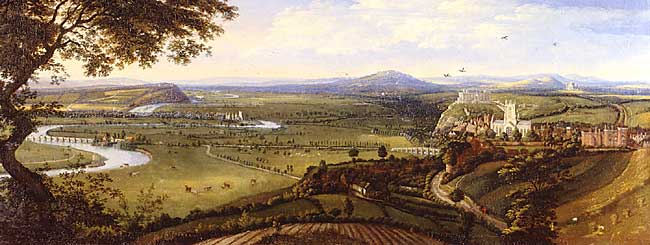
Overview: introduction

Nottingham from the east, by Jan Sieberechts c.1700 (© Nottingham City Museums and Galleries; Nottingham Castle).
Long before Nottingham was established in the tenth century people had settled in and around the area north of the Trent flood plain. We can date the town from 920, and from then until the late eighteenth century it was a small, compact settlement locked between what is today Parliament Street to the north and Canal Street to the south, and between Chapel Bar to the west and the Ice Centre to the east. The population seldom if ever exceeded 4,000 before 1650. Houses were scattered around the streets and narrow lanes leaving plenty of room for gardens, orchards, and open spaces.
In the late seventeenth and early eighteenth century the number of people living in the town began to increase rapidly. House building also took off, and the town quickly reached bursting point, unable to escape from its medieval constraints because of the open fields to the north and the meadows to the south. An unforeseen consequence was the development of slums, and congestion was relieved only slowly in the wake of the 1845 Enclosure Act.
During the 1850s development took place to the north, to the south, to the west, and in the surrounding parishes of Basford, Radford, Lenton and Sneinton. Together with Bulwell, these villages became part of the town as a result of a borough extension in 1877. Nottingham was raised to city status in 1897.
During the twentieth century the city centre has gradually become the commercial and business area, while the majority of the population has settled in new suburbs and estates - some of which were brought into the city through further boundary extensions in 1932 and 1951. Even those who remain in the ‘inner city' (now thought of as a much wider area than in the past) have often been rehoused during the development programmes of the present century.
Today Nottingham is a thriving commercial centre which thinks of itself as the 'Queen of the Midlands'. It is home to more than a quarter of a million people, and a workplace and shopping centre for many thousands more who live beyond its boundaries.